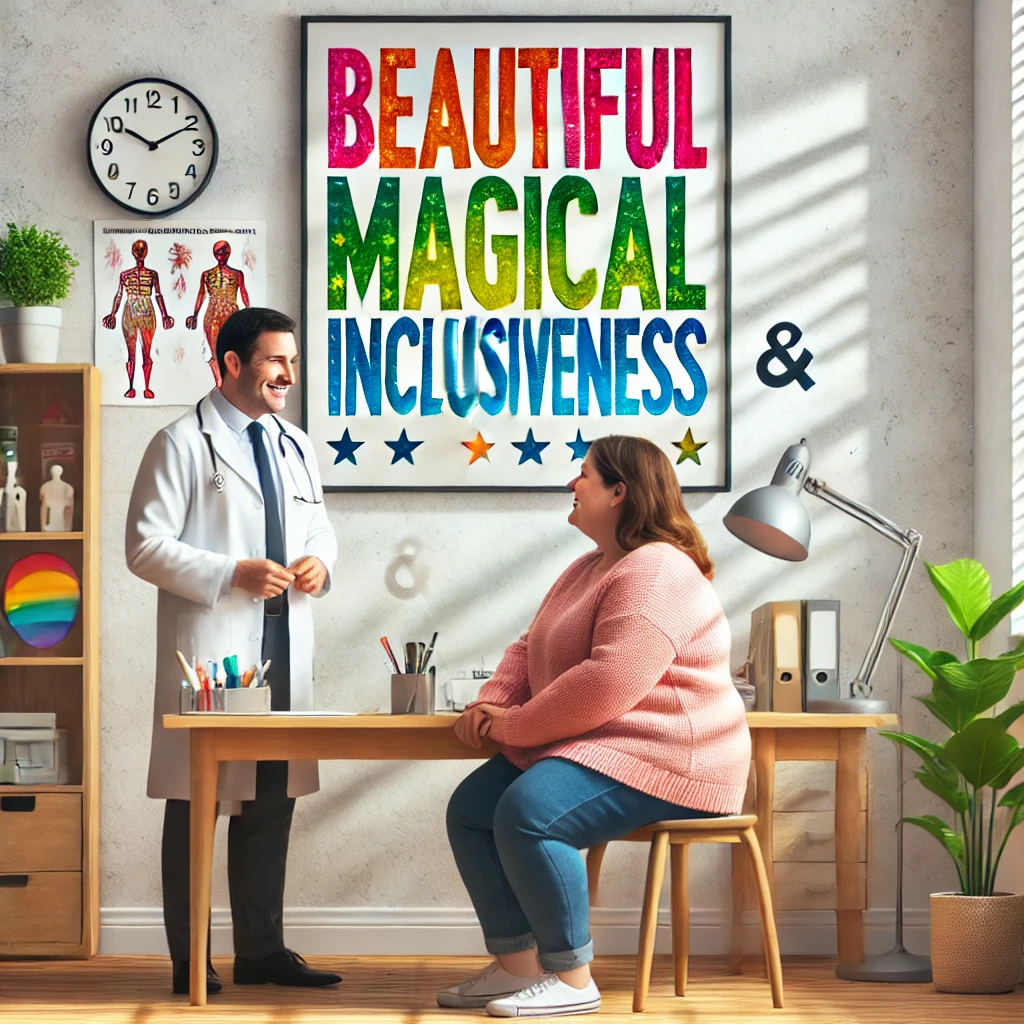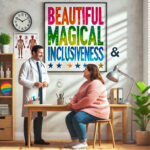It’s time to redefine the Body Mass Index (BMI)
Let's choose Beautiful Magical Inclusivity (BMI) for all

It’s time to redefine the Body Mass Index (BMI)
BMI or Body Mass Index is a term used frequently when discussing the health and weight management of humans. It appears in medical charts, insurance statistics and weight loss programs. People are judged by it constantly, sight unseen.
In her book, “You just need to lose weight” and 19 Other Myths about Fat People, Aubrey Gordon does an excellent job explaining the origins of BMI and its use:
[i] Without getting into the weeds, a BMI is basically a number obtained by a complicated equation using an individual’s height and weight. The measure was created to study trends in populations rather than individuals.
[ii] BMI does not take age, sex or race into account, and this is one reason why its validity as a measure of health is often questioned in the anti-diet and Health At Every Size (HAES) communities.
But I digress…
After allowing the traditional definition of BMI to rule my life for as long as I can remember, I am choosing to define it in a more hopeful, positive way. From now on, I am defining B-M-I as Beautiful Magical Inclusivity for the following reasons:
Beautiful: This word can be interpreted in many ways. I would venture to say that “beautiful” has as many connotations as people worldwide. The well-known phrase “Beauty is in the eye of the beholder” applies to many things—art, literature, nature, character, and appearance. Because beauty is in the eye of the beholder, I’ve decided it is an excellent substitute for the word Body in BMI. By using the word Beautiful, my mind immediately travels to a better place that is more positive and universal. Everyone has a body, and no two bodies are alike. The word “body” applies to everyone, but for those struggling with body image issues or those with disabilities, that word can be loaded with bias, discrimination and pain.
If beauty is in the eye of the beholder, it is also subjective, right? What is Beautiful to one person might not seem so to another person, and this is okay; it is even preferable! Imagine how boring our world would be if we all had the same definition of beauty. But wait—isn’t that what happens every day using BMI? Society tells us there is only one measure of health and fitness by preaching the range of numbers we must fall between, and if we are, in many cases, over that range, we’re not only unhealthy but unworthy. All of us are beautiful—nobody, whether large or small, able or disabled, should be judged by an arbitrary number never intended for individual use.
Magical: I believe nature and all living things, including humans, are magical. I see the proof when I look at my newborn grandson or the Gerbera daisy—a gift from a friend (still growing despite my lack of a green thumb). In the traditional BMI definition, the M stands for Mass. Some synonyms for mass include “clump”, “bunch”, “pile”, and “heap”. I like to think of the human body as more than a clump, bunch, pile or heap of cells, so I prefer the word magical. Even when nature goes awry as it often does, bringing illness, injury or disability, the magic remains. It may be more difficult to find, especially when focusing on a medical and societal model of what is “normal,” but it exists, possibly more so.
When my first child was stillborn, something had gone terribly wrong, but magic was still present that night. Of course, I was devastated, and if anyone had suggested that I look for the magic in the situation, I wouldn’t have believed them or appreciated their words. In the events that unfolded, however, the magic began immediately. From the love and concern that surrounded us to the love and concern I could extend to others who faced the same tragedy in the years to come, good was born from that heartbreaking event.
While watching the 2024 Paralympics, I felt profoundly inspired by the athletes who have defied the odds of what society considers “normal” and have achieved success in their chosen sports and in their lives. Watching them made me realise how much I take for granted and how much I have for which to be grateful. Those athletes are a powerful example of the resilience and magnitude of the human spirit. There is definitely magic not only in their athletic achievements but in their joyful, positive attitudes.
Magic also exists in the transformation I’ve witnessed in myself and others who face every day with courage and resolve to overcome eating disorders. EDs are relentless, waiting in the background to pounce and take control. It is not a small feat to live in the space of recovery, especially in this diet-culture world where the messages to control and shrink our bodies are everywhere.
Inclusivity: I had a difficult time choosing this word. At first, I considered keeping the word as Index, but after writing about Beautiful and Magical, Index didn’t fit. In this context, Index feels like a cold, calculating term. Inclusivity, however, feels more positive, offering hope and connection. The original BMI, as it is being used today, is set up to exclude people from what is considered normal. To be above a certain point in the index is considered unhealthy (bad), and the same applies if the reading is below a certain point.
But let’s be honest—in diet culture, having a low BMI is considered healthy (good) and is something for which to strive. I know I did! Because my BMI never got dangerously low, I received praise from doctors, which in turn fueled my ED.
There is a misconception that only people with very low BMIs can suffer from eating disorders, and that is not true.
Eating disorders are mental health illnesses and encompass more than the physical manifestation of a low BMI, which is why relying on that number can be problematic. Had a medical professional inquired about my relationship with food and my body image when I suddenly lost a significant amount of weight, my ED might have been discovered sooner. Instead, it clung to me ever so tightly for two more decades.
Inclusivity means that everyone belongs and has value. The concept of all bodies being good bodies is one that society has fought against for decades. While there has been progress in recent years regarding body acceptance and positivity, there is more to do.
I prefer the word Inclusivity because there is no numerical value for measuring a person’s true value or character; it just is. We are all perfectly imperfect with various traits and personalities. Nobody can be perfectly perfect (although the devious ED demands we try). We all make mistakes, but we also have an endless capacity for goodness, forgiveness and change. Sometimes, change is a choice, but other times, it is thrust on us, and choices must be made. The choice to include everyone, no matter their size, ability, race or gender identity, is powerful and life-changing. Inclusivity makes the world a better place overall.
BMI: Beautiful Magical Inclusivity
Beautiful Magical Inclusivity is now my preferred way to define BMI. I choose not to be defined by an index never intended for me (or anyone). Instead, I focus on what is beautiful, magical and inclusive in myself and everyone I meet. My new definition of BMI promotes positivity and hope instead of judgment and fear. It might be far-fetched, but imagine going to your doctor and being appreciated for who you are as a whole person, not just a cold, meaningless metric.
A new definition of health that is not based on a number and doesn’t demean or judge would uplift people’s physical and mental health and make this world a more beautiful, magical, and inclusive place!
REFERENCES
1. Gordon, A. (2023) “You just need to lose weight” and 19 other myths about fat people (pp.52-62. Beacon Press
2. cdc (2022, September 2). CDC Healthy Weight, Nutrition and Physical Activity. cdc.gov. Retrieved August 27, 2024 from https://www.cdc.gov/healthy weight/assessing/bmi/adult_bmi/english bmi_calculator/bmi_calculator.html
3. Health at Every Size (2024). The Health at Every Size Principles (HAES). About Health at Every Size (HAES). Retrieved August 27, 2024, from





